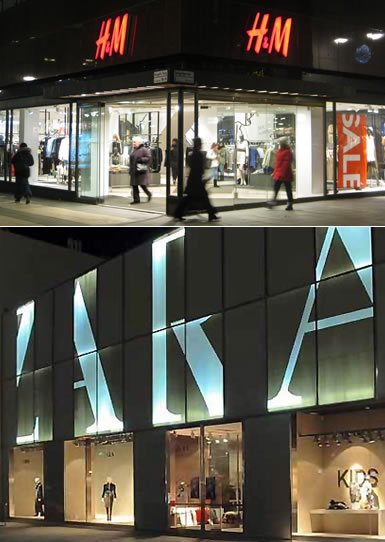The Fast Fashion Business Model

Photos from The Style Vise Blog and The Asia Career Times.
The "fast fashion" business model is exemplified by companies like H&M and Zara. Fast fashion producers can go from design concept to product on the retail floor in under a month's time, which allows them to follow emerging trends. If some celebrity shows up in a cute jacket on the cover a magazine, H&M has manufacturing processes in place to get a copy of that style to consumers in two to three weeks. Now, if we could just have a modest clothing company that does the same thing, following those trends with minor alterations for modesty, wouldn't that be fabulous?
Zara is also a fast fashion producer, one of the few on the same speed level as H&M. While living in New York, I rarely found clothes I liked at H&M, but I purchased several things from Zara, whose fashion is more modest overall albeit more expensive. Some people don't like to wear clothes beyond one season, in which case H&M's cheap goods are perfect--low cost for a few wearings.
Not all of H&M's or other fast fashion producers' styles go from concept to selling floor so quickly. These companies stock some core items which are sourced over a longer time frame. However, they have a few leading collections that are delivered every few weeks that follow the latest trends and help make the merchandise offerings always fresh. I'd love to see the runway designers do the same thing, like capsule collections every month instead of two huge shows per year. A schedule like this would be a boost for retailers and much easier on the design, patternmaking and sewing staff that typically works 60 to 70 hour weeks prior to big shows. Spreading the work throughout the year would be more humane for them in addition to being more fun for consumers who like to shop for new items monthly.
I like to encourage people that shopping for a modest wardrobe tends to be more successful if fewer items are purchased at a higher cost each. More modesty usually means more fabric, which increases cost. I heard once that fashion followers in France will pay $200 for designer jeans but only own maybe five pair of jeans and a few tops for their total wardrobe. They pay more per item for fewer, higher quality clothes.